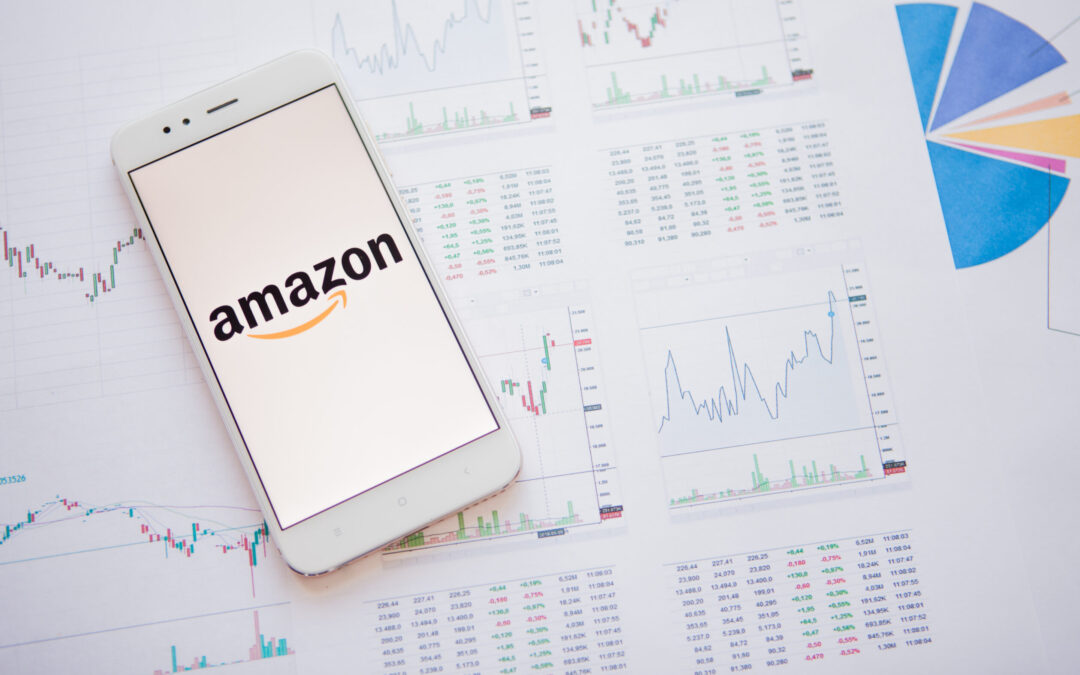Fun fact: Amazon currently has a market value (market capitalization) of about $1.6 trillion.
The market cap of the Russell 2000 Index is only $1.9 trillion. If Amazon (Nasdaq: AMZNAMZN) keeps up its current trajectory, it will be bigger than the entire Russell 2000 Index in a matter of weeks.
That’s one company’s stock … bigger than an index of 2,000 of America’s most promising small-cap stocks.
It’s easy to see how Amazon ballooned into a $1.6 trillion company.
Back in the good old days before COVID (you know, six months ago…), Amazon already benefited from a variety of trends it helped create:
- Online commerce continued to grow relative to brick-and-mortar retail.
- More television viewing was moving to streaming services,.
- Back-office computing was migrating to the cloud.
Then COVID happened. And all of these trends got kicked into overdrive.
Americans started ordering online a lot more while under lockdown.
But as malls began to reopen, consumers didn’t miss them all that much. Once you get used to packages magically arriving on your doorstep a day after you ordered them, going to the mall seems like a waste of time.
With movie theaters still closed, or at least at reduced capacity, streaming via Netflix and Amazon Prime Video became the next best thing. That’s as true today as it was in March.
And with a large chunk of the white-collar workforce still working from home (perhaps forever), keeping everyone connected via cloud services is critical. Amazon’s AWS invented the cloud as we know it, and it remains the biggest player in the field.
All of this was reflected in Amazon’s quarterly earnings call last week.
Revenues were up 40% over the previous year, blowing away analyst estimates by $7 billion. Revenues from AWS jumped 29%.
Earnings per share nearly doubled, coming in at $10.30 for the quarter. And this despite Amazon dedicating more than $4 billion in investments to help it fight COVID. To say the company killed it this past quarter would be the understatement of the year.
All of that shows us how far Amazon has come. But I’m more interested in where it’s going.
Let’s see how it ranks using Money & Markets Chief Investment Strategist Adam O’Dell’s stock rating system.
How Amazon Stock Ranks
Amazon sports an overall rating of 86, making it the crème de la crème. Only 14% of all stocks in Adam’s universe rate higher. Amazon picks up the most points on growth and momentum. It lags in value and size. Amazon is a big company — and it’s not cheap.
Let’s break it down.
- Growth — Amazon ranks a 97 in growth, scoring well in sales growth (96), earnings per share growth (95) and net income growth (89). Amazon is one of the great growth stories of our time. And it’s not slowing down.
- Momentum — Amazon also scores well in momentum, ranking a 96. Only 4% of stocks in the investable universe score better here. It’s rare for a company as large as Amazon to enjoy sustained momentum like this. But we’re in an era where, at least in tech, it’s winner-take-all economics.
- Volatility — For a high-flying internet stock, Amazon’s volatility is surprisingly low. It ranks a 95.
- Quality — Amazon is a high-quality company, ranking a 93. It is testament to how great a company Amazon is when its fourth-best rank is still a 93. Only 7% of all companies rank higher. In particular, Amazon’s cash flow numbers pull it higher. Amazon’s cash flows are ranked 99.88, meaning that only 12 stocks out of 1,000 score better.
- Value — You get what you pay for. Amazon is a fantastic company, and as a result, it’s expensive. Amazon ranks a 13 on value, meaning 87% of all stocks are a better value.
- Size — And finally, we get to size. As a general rule, smaller is better when it comes to investing. The smaller a company is, the less buying is needed to send the shares higher. Alas, Amazon sores a 0.25 here, meaning that it’s larger than 99.75% of all companies. But the company’s gargantuan size hasn’t slowed it down much. Shares are up by more than half this year.
Is Amazon a Buy?
After a run like this, I understand being a little apprehensive.
But based on its high scores in growth, volatility, quality and momentum — and its overall rating of 86 — Amazon is a winner.
If you’re worried about buying at the top, you could spread out your buying over time using dollar-cost averaging.
I also believe that this macro environment favors Amazon. If you’re waiting for the stock to get cheap, that day may never come.
• Money & Markets contributor Charles Sizemore specializes in income and retirement topics, and co-host on our podcast, The Bull & The Bear. He is also a frequent guest on CNBC, Bloomberg and Fox Business.
Follow Charles on Twitter @CharlesSizemore.





